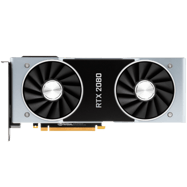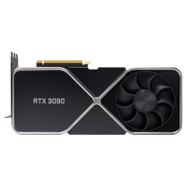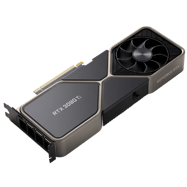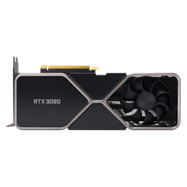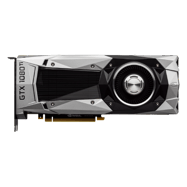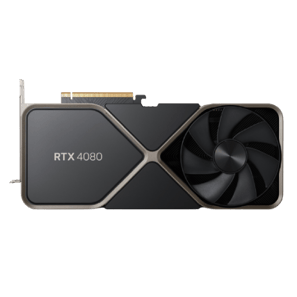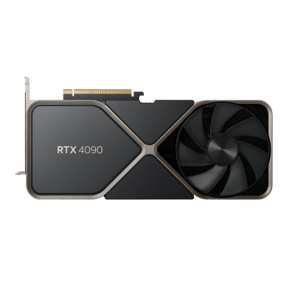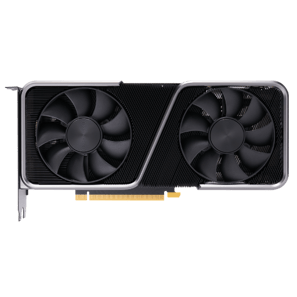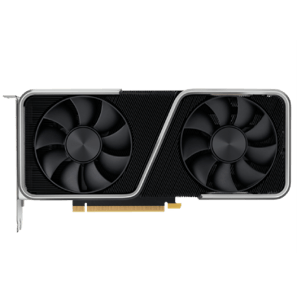The most used graphics cards by Overwatch 2 players
The most popular graphics cards are calculated based on 57 professional players.
Introduction
In a game that’s as fast-paced and frantic as Overwatch 2, it’s of critical importance that you have enough frames per second so that you can make sense of everything that’s flying around on your screen. That’s why 99% of our analyzed Overwatch 2 professionals game on a system and monitor that’s capable of pushing at least 144 frames per second. You can read why that is in our detailed article here but if there’s one thing we’ve learned by analyzing all of these professionals (across all of our games) it’s that investing in a higher framerate setup is one of the first things to do if you really want to take your gaming to the next level.
Getting a high refresh rate monitor isn’t gonna cut it, however. You’ll need a powerful PC that can push the required amount of frames to said monitor and inside of that PC you’ll want a good processor, enough RAM, and, perhaps most importantly, a dedicated graphics card (or Graphical Processing Unit – GPU) that can handle whatever game you throw at it.
In this article we’re taking a look at your options for Overwatch 2. We’ve been combining our expertise and our extensive data on professional players to create this list of GPUs so that there’s something to be found for every budget and setup.
Disclaimer
The Pro Usage Top 5 gets updated daily so that you can get an up-to-date overview of what the pros are using at any given time, which includes discontinued cards. In the body of the article we will focus on cards that are currently available for purchase.
What makes a GPU good for Overwatch 2?
Overwatch 1 used to have a framerate cap of 300 frames per second, which obviously isn’t ideal in today’s world of PC gaming where 360Hz monitors have been coming out and getting picked up by gamers. Luckily for us gamers, the framerate cap has been raised to 600 frames per second in OW2, and that’s allegedly thanks to NVIDIA. When working with Blizzard to integrate NVIDIA’s Reflex support into the game, the developers noticed that the recent wave of GPUs is quite simply way too powerful to be capped at a ‘mere’ 300 frames per second, so they upped that limit.
Overwatch has never been a terrible demanding game, and the same can be said for Overwatch 2. Recent cards are pretty much overkill if you’re gaming at 1080p and using competitive video settings, and this is further evidence towards the point that 1440p 360Hz monitors might be the way of the future. Of course that tech is still new, so it’ll cost you a pretty penny, but the fact that Overwatch 2 is so easy to run is also great news for budget-minded gamers.
In this guide, we’ll give you some options at various resolutions and framerate targets so that you can get the GPU that suits your needs and overall gaming setup.
On NVIDIA Reflex
We briefly mentioned NVIDIA Reflex in the intro, so we’ll talk about it a bit more here.
Reflex Low Latency is a technology by Nvidia that was released alongside their 30 series cards (though it’s available for GeForce 900 GPUs and newer) and it’s made to do two things: reduce your overall system latency (click here for Nvidia’s explanation on that, or click here to read our own more basic article) and allow you to measure your system latency. The caveat is that it only works in certain games, and Overwatch 2 is among the supported games.
NVIDIA GeForce RTX 4080
NVIDIA Reflex Compatible
NVIDIA GeForce RTX 4080
The GeForce RTX 4080 is part of the 40 series of graphics cards, made by NVIDIA. These succeeded the 30 series of graphics cards.
Specs
| NVIDIA CUDA Cores | 9728 |
|---|---|
| Boost Clock | 2.51GHz |
| Memory Size | 16GB |
| Memory Type | GDDR6X |
If you’re talking about future-proofing your build, you’ve got to consider the RTX 4080. Even at high graphics it will reliably serve up over 400 frames per second at 1080p, and if you up the resolution to 1440p (without dropping the graphics down) it’s going to hover around the 360 frames per second mark on average, meaning that this is basically the ultimate 360Hz card for people who want to play competitively.
If you max out the graphics, it’s a different story. The 4080 will then hover around 310 FPS at 1080p and 265 FPS at 1440p. This means that it’s perfect for people with a 240Hz monitor who want to play Overwatch 2 at max settings, but since pretty much no competitive gamer ever turns their graphics all the way up (framerates are simply too important) we’re not going to dig the card for losing some performance at the absolute maximum settings.
Lower the graphics down somewhat to the competitive values and the 4080 truly gets unleashed. You’ll get around 500 frames per second at 1080p and 451 frames per second at 1440p. That’s more than enough to ensure that you won’t dip below 360 frames per second even during hectic teamfights.
NVIDIA GeForce RTX 4090
NVIDIA Reflex Compatible
NVIDIA GeForce RTX 4090
Used by 2 Overwatch 2 players ()The GeForce RTX 4090 is part of the 40 series of graphics cards, made by NVIDIA. These succeeded the 30 series of graphics cards.
Specs
| NVIDIA CUDA Cores | 16384 |
|---|---|
| Boost Clock | 2.52GHz |
| Memory Size | 24GB |
| Memory Type | GDDR6X |
If you truly want to go all out and you want to get the best of the best, then the GeForce RTX 4090 is your pick. For Overwatch 2, it’s a little overkill: you’ll be touching that 600 FPS framerate cap at competitive settings at 1080p and you’ll get a bit under 500 frames per second at 1440p, so if you’re a competitive player and you’ll be turning your graphics down anyway then this card is probably too much.
This is the only card that’ll run Overwatch 2 at 360 frames per second (on average) with the settings turned all the way up to max, so if that’s your goal then you simply have to look at this card. It’s also a good one for competitive players with a 4K monitor, as it’ll nicely stay above 240 frames per second at those resolutions.
This is currently the best graphics card out there, and if that’s what you’re interested in then you should get this one, but otherwise we recommend saving some money and going for a (slightly) less powerful card if you’re looking for a dedicated Overwatch 2 GPU.
NVIDIA GeForce RTX 3070
NVIDIA Reflex Compatible
NVIDIA GeForce RTX 3070
The GeForce RTX 3070 is part of the 30 series of graphics cards, made by NVIDIA. These succeeded the 20 series of graphics cards.
Specs
| NVIDIA CUDA Cores | 5888 |
|---|---|
| Boost Clock | 1.73GHz |
| Memory Size | 8GB |
| Memory Type | GDDR6 |
This is an older card right now, but if you want to play at 360Hz on a budget (which also means playing at 1080p and lowering your graphics to competitive levels) then this is a great pick. It’s going to hover right around 355 frames per second on average, meaning that it doesn’t quite hit that sweet spot of 360 FPS, but it does get close enough to be considered adequate for a budget 360Hz pick. If you want to game on a 1440p, 360Hz monitor you should get a more powerful card, but 1440p 240Hz is very doable here, as you’ll be getting around 300 frames per second.
NVIDIA GeForce RTX 3060
NVIDIA Reflex Compatible
NVIDIA GeForce RTX 3060
The GeForce RTX 3060 is part of the 30 series of graphics cards, made by NVIDIA. These succeeded the 20 series of graphics cards.
Specs
| NVIDIA CUDA Cores | 3584 |
|---|---|
| Boost Clock | 1.78GHz |
| Memory Size | 12GB, 8GB |
| Memory Type | GDDR6X |
We of course realize that some people simply don’t want to spend the money on a 360Hz monitor, and if you’re on a budget then the RTX 3060 is still a fantastic card. You’ll get around 260 FPS at 1080p with competitive settings, making this a great 240Hz card (and a fantastic 144Hz card) and the good thing is that the performance doesn’t drop too much if you’re upping the resolution. With an average framerate of 230 FPS, the RTX 3060 will serve you well even at 1440p.
If you want to build a budget system for Overwatch 2, you simply can’t go wrong with this card.
Best GPU for Overwatch 2 – Conclusion
Overwatch 2 has raised its framerate cap to 600 frames per second, and that combined with the fact that it’s really well optimized makes for a game that has a ton of choices when it comes to the GPU you’re going to want to use. There is something here for everyone: there’s a 1440p 360Hz card meant for gamers who are playing competitively (and, as such, turning their graphical settings down) as well as a budget card that’ll rather easily reach the coveted 240 FPS mark on both 1080p and 1440p.
Take your time to read through this list, consider what you are trying to build when it comes to your gaming system, and then take your pick. There should be a card for everyone in this list.


